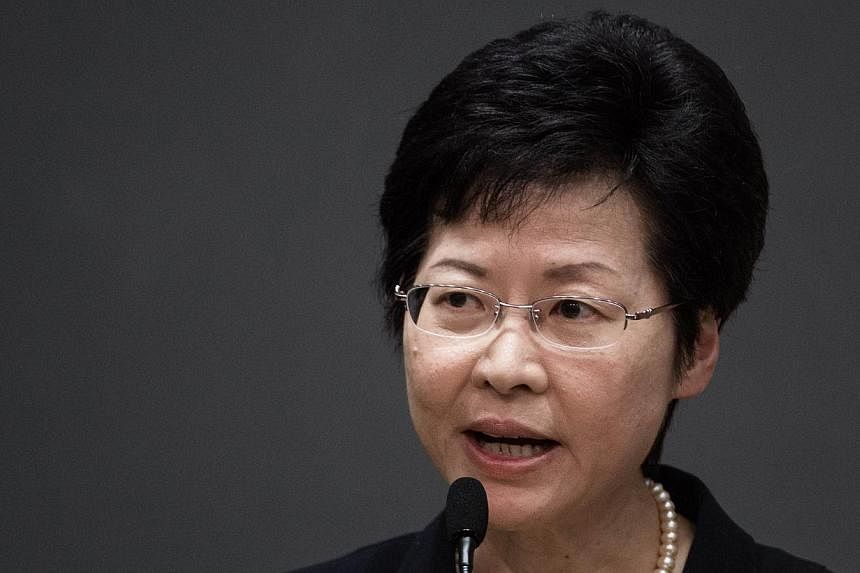Hong Kong's Chief Secretary Carrie Lam, 56, has been tasked by Chief Executive Leung Chun Ying to engage student protest leaders to resolve the political unrest that has brought parts of the city to a standstill. Here are 8 things you may not know about her:
1. Lam grew up in a flat so small that she had to do her homework sitting on her bed. A brilliant and hardworking student, she wept once when she did not top her class - the first time in her 13 years in primary and secondary school. "I asked myself, why was I not number one?" she told RTHK radio in an interview in 2013.
2. She developed her desire to serve the Hong Kong people when she was a student at St Francis' Canossian College, a Catholic girls' school in Wan Chai. When she became head prefect, she sought advice from a teacher on how to control the students. The teacher reportedly told her: "You don't control, you inspire."
3. As a student, Lam was an activist and campaigned for the government's handling of Yau Ma Tei boatpeople who were facing a difficult situation. She was active in the student union at the University of Hong Kong, where she switched her course of study from social work to sociology to help her understand society.
4. After joining civil service in August, 1980, Lam has held positions in various departments, including director of social welfare (August 2000 to October 2003), permanent secretary for housing, planning and lands (November 2003 to May 2004), director-general of the Hong Kong Economic and Trade Office in London (September 2004 to March 2006), and permanent secretary for Home Affairs (2006-2007). She was appointed chief secretary in July, 2012, becoming the city's number two leader.
5. Lam is not without her controversies. As the development secretary in the administration of the previous Chief Executive Donald Tsang, she oversaw the demolition of the landmark Star Ferry and Queen's piers, which triggered protests from Hong Kongers upset that the government was bulldozing history for economic development. She also could not tackle the problematic "small-house policy", which has been subject to abuse amidst a land crunch. The policy gives male indigenous villagers in the New Territories the right to build a house close to their ancestral homes but the policy has drawn criticism because in some cases, it has been abused for profit.
6. Her biggest challenge so far has been leading the political and constitutional reforms in Hong Kong. It's a job that has caused her to lose her long-held title as the most popular member of the Hong Kong government in August, when her approval ratings in a University of Hong Kong poll plunged to its lowest level since she became chief secretary,
7. She is a mother of two sons who are now at university in Britain, where her husband Lam Siu-por is spending his retirement. She had planned to retire with her family in the English countryside, but her husband, a former mathematician, told her that if she gave up the opportunity to serve the Hong Kong people, she would probably regret it later in life.
8. Lam, often known as "Iron Lady", has a softer side. She once revealed that she had asked her husband to return to Hong Kong more often to give her support. "I have talked to my husband and asked him to come back and be with me more. Although I know he likes to stay in Britain and do what he likes to do, I have told him about it …so I can have a shoulder to lean on," she said.
Source: South China Morning Post, Hong Kong Government website, The Standard, China Daily

